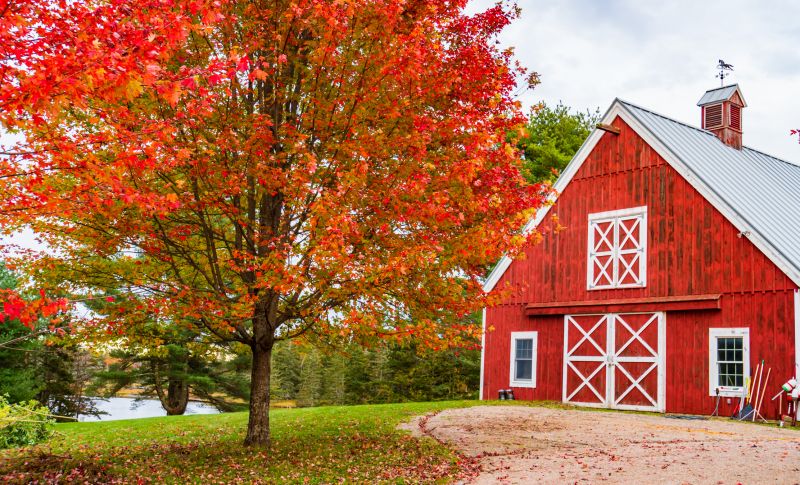Top-Rated Tools And Materials For Pole Barn Fixes
Compare leading repair products that offer durability, ease of use, and effective results for maintaining your pole barn.
 Maintaining and repairing a pole barn requires a careful selection of durable and reliable products designed to withstand the demands of agricultural, storage, or workshop environments. Proper repair materials can extend the lifespan of the structure, prevent further deterioration, and ensure safety for occupants and stored items. When addressing pole barn repairs, it is essential to consider the specific issues such as damaged posts, roofing problems, or siding deterioration, and choose products that are compatible with existing materials and conditions.
Maintaining and repairing a pole barn requires a careful selection of durable and reliable products designed to withstand the demands of agricultural, storage, or workshop environments. Proper repair materials can extend the lifespan of the structure, prevent further deterioration, and ensure safety for occupants and stored items. When addressing pole barn repairs, it is essential to consider the specific issues such as damaged posts, roofing problems, or siding deterioration, and choose products that are compatible with existing materials and conditions.
Top Overall Option
Heavy-Duty Structural Reinforcement Kit
A comprehensive reinforcement kit designed to strengthen pole barn structures, including heavy-duty brackets, bolts, and support beams. Ideal for addressing compromised posts or framing, these kits provide a reliable solution to enhance stability and safety. They are suitable for various repair scenarios and are easy to install with basic tools.
Types of Products For Pole Barn Repairs
Post Anchors and Base Plates
Devices used to secure pole bases to concrete or other surfaces, providing stability and preventing shifting or settling.
Metal Roofing Panels
Durable panels for replacing or upgrading roofing, offering weather resistance and longevity.
Plywood and OSB Sheathing
Structural panels used for siding or roof sheathing, providing support and insulation.
Weatherproof Sealants and Caulks
Sealants for preventing water ingress around joints, seams, and cracks.
Structural Support Beams
Reinforcement beams made of steel or wood to bolster weakened framing.
Roof Flashing and Metal Trim
Metal components to direct water away from vulnerable areas and improve durability.
Concrete Patching Materials
Products for repairing damaged concrete foundations or footings.
Insulation Materials
Insulation options to improve temperature regulation and protect stored items.
Fasteners and Bolts
Heavy-duty fasteners for securing structural components during repairs.
Paints and Protective Coatings
Coatings to prevent rust and weather damage on metal surfaces.
Gutter Systems
Rainwater management systems to prevent water damage around the structure.
Foundation Jacks
Adjustable supports used to level or stabilize uneven foundations.
Vapor Barriers
Materials used to control moisture and prevent mold growth inside the structure.
Ladder and Scaffold Equipment
Tools for safe access during repairs and maintenance tasks.
Drainage Solutions
Systems designed to redirect water away from the foundation to prevent erosion.
Wind Bracing Kits
Components to reinforce walls and framing against wind loads.
Popular Choices
Widely used for securing and stabilizing pole bases in various conditions.
Commonly selected for sealing leaks and extending roof lifespan.
Popular for reinforcing framing and attaching new supports.
Frequently used for siding and interior sheathing repairs.
Commonly chosen for fixing foundation cracks or deteriorated footings.
A popular replacement option for damaged or aging roofing.
Frequently used to seal joints and prevent water infiltration.
Often selected to strengthen sagging or compromised framing.
Popular for managing water runoff and protecting foundations.
Commonly applied to extend the life of metal surfaces exposed to the elements.
Frequently used for leveling uneven floors or foundations.
Popular for enhancing structural stability against high winds.
Pole barn repairs often involve a combination of structural reinforcements, weatherproofing solutions, and surface treatments. Selecting the right products can simplify the repair process, reduce the need for frequent maintenance, and improve the overall stability of the structure. Whether dealing with minor damages or significant structural issues, the right repair products can help achieve a long-lasting fix.
It is important to evaluate the environment in which the pole barn is situated, including exposure to moisture, wind, and temperature fluctuations. Products that resist corrosion, provide waterproofing, or offer UV protection are typically preferred for outdoor structures. Additionally, compatibility with existing materials, ease of installation, and cost-effectiveness are key factors to consider when selecting repair products.
Investing in quality repair products not only restores the integrity of the pole barn but can also enhance its functionality and appearance. Properly selected materials can prevent future damage, reduce downtime, and ensure the safety of users. Consulting with professionals or experienced DIYers can provide valuable insights into the most suitable products for specific repair needs, leading to more effective and durable results.
Key Buying Considerations
- Assess the specific damage or issue to determine the appropriate product type.
- Ensure compatibility of repair materials with existing structures and materials.
- Consider environmental exposure such as moisture, wind, and sunlight when selecting products.
- Prioritize corrosion-resistant options for outdoor or humid environments.
- Evaluate the ease of installation and whether professional help is needed.
- Check product durability and lifespan to ensure long-term effectiveness.
- Match the size and capacity of products to the scale of the repair project.
- Review manufacturer instructions for proper application and safety precautions.
- Consider the cost-effectiveness of repair solutions relative to the extent of damage.
- Look for products that provide a comprehensive solution for multiple repair needs.
- Verify availability of replacement parts or additional components if needed.
- Determine if the repair products are suitable for both structural and cosmetic fixes.
- Assess the weight and handling requirements for large or heavy materials.
- Check for compatibility with existing fasteners or hardware used in the structure.
- Consider the aesthetic impact if visible repairs are necessary.
This page contains affiliate links. We may earn a commission if you make a purchase through these links, at no additional cost to you.
